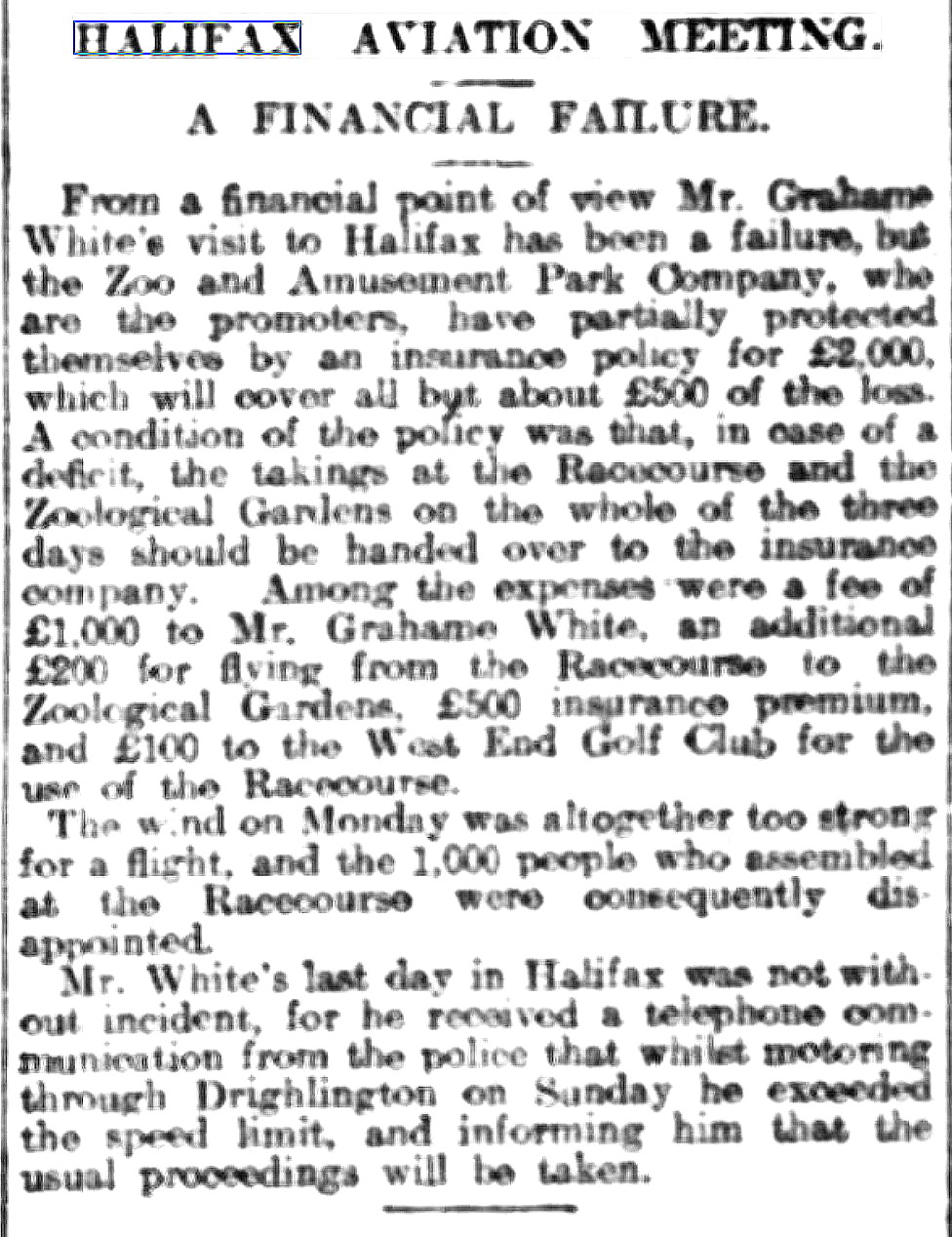Halifax race course
See also HALIFAX FLYING SITES
HALIFAX RACE COURSE: Temporary aerodrome
A MICHAEL T HOLDER GALLERY
Note: These eight items were kindly provided by Mike Holder, a great friend of this 'Guide'. The pictures were published in Flight magazine on the 18th June 1910, and the newspaper article was published in the Yorkshire Post and Leeds Intelligencer on the 4th June 1910.
Note: The fifth item, a picture, was published in the St Helens Examiner on the 18th June 1910. Judging by the background it seems likely this picture was taken at Halifax. The sixth item, a newspaper article, was published in the Yorkshire Post and Leeds Intelligencer on the 13th June 1910. The seventh item, another picture, was published in the Halifax Evening Courier on the 11th June 1910. The eighth and final item, another newspaper article, was published in the Bradford Weekly Telegraph on the 17th June 1910.
Location: Just W of Halifax town centre.
NOTES: It was arranged that Claude Grahame-White, by then having achieved 'super-star' status in the UK, would give demonstrations of flying over three days - these being Friday, Saturday and Monday, the 10th, 11th and 13th of June. It is hard to imagine today just how much impact on the public such a demonstration had in those days. Thousands would throng to see a famous aviator doing his daring aerial deeds to entertain them.
The two newspaper articles above certainly illustrate just how marginal these demonstrations were. In those days most of the flying was done early in the morning and in the evening when prevailing winds are generally either at their lightest or a calm exists. But huge crowds want to see displays at the time of day when most outdoor sporting events occur.
We need to remember of course, that these early aerial contraptions had nearly everything stacked up against them. Their engines, of dubious reliabilty, had just enough power to get the machine into the air. The speed range was so small that even relatively light turbulence and eddies could easily exceed the aeroplanes ability to remain flying without stalling. They were also, in many respects, structurally very frail. Almost nothing was known about design techniques to apply strength to an airframe where it was most needed. Therefore, as often happened, any excessive control movements, or unexpected gusts, could easily exceed the ability of the machine to remain structurally intact, or indeed, to keep flying.
Many seriously crashed for all sorts of reasons, not least the lack of basic piloting skills. However, quite a few serious crashes were survivable, for three basic reasons: They flew very slowly and usually quite low. The third reason being that due to lack of structual strength, they buckled up on impact in a relatively slow manner. The main cause in many cases of the accident proving fatal, was the feature in many designs of having the engine mounted directly behind where the pilot sat! Not a good idea. The Wright brothers were mostly to blame for this basic design flaw. Plus of course their design(s) were inherently unstable, and the format was quite quickly, after the middle of WW1 at any rate, discarded.
It was soon realised during WW1, not least by designers such as Geoffrey de Havilland, that having the engine mounted at the front of the airframe, was altogether a much better solution - for types with just one engine.
We'd love to hear from you, so please scroll down to leave a comment!
Leave a comment ...
Copyright (c) UK Airfield Guide























